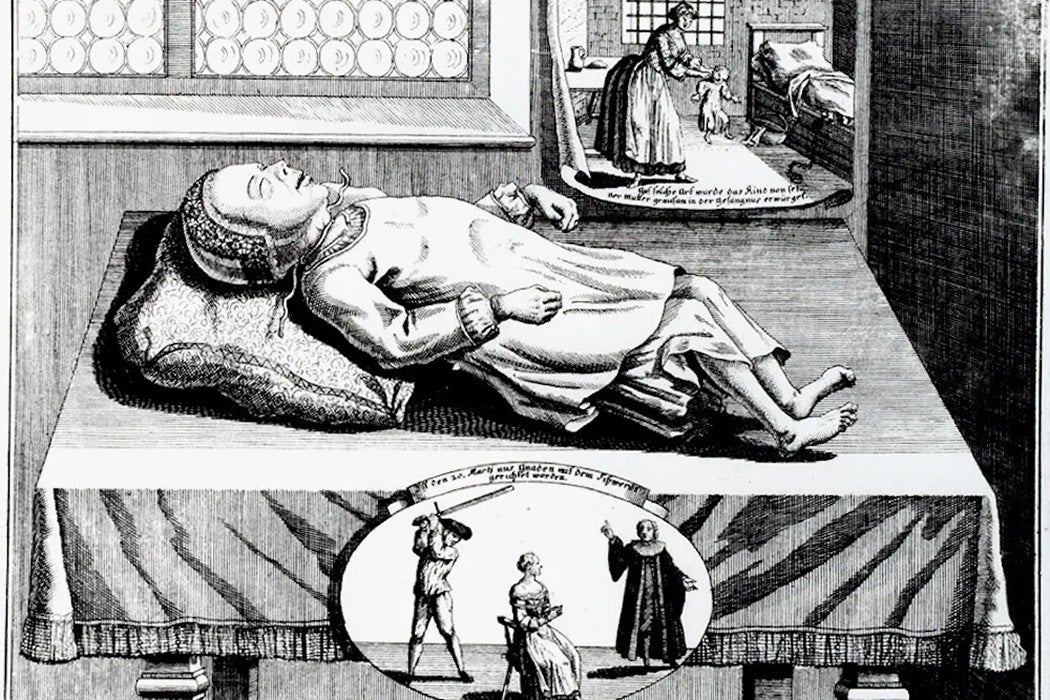For Christians, suicide has traditionally been regarded as a sin. This confronts would-be suicides with a dilemma, suffering the kind of depression that offers no hope, yet fearing they face eternity in hell.
Some in early-modern Europe found an ingenious (and horrific) solution. The penalty for murder was execution. So they would commit murder in order to be executed. Historian Kathy Stuart terms this “suicide by proxy,” and her research uncovered a pattern of such cases in the Holy Roman Empire, between 1612 and 1839.
In the justice system of early modern Europe, public executions offered a spectacle of both punishment and penitence. The condemned received the ministrations of a priest, and had the opportunity to repent and receive absolution. For the suicide-by-proxy, this was the perfect outcome. They would “sacrifice” a child, often by slitting its throat: a symbolic act in the tradition of blood sacrifice, also echoing the beheading the murderer would receive. And they could still be forgiven before their deaths. The murderers sometimes explained their choice: by killing an innocent they could be sure their victim was going to salvation.
Stuart’s research showed this practice to be more prevalent among Protestants than Catholics, and more common among women than men. But in seeking absolution before death, Protestant suicides-by-proxy were pursuing a Catholic goal. As Stuart notes: “More than two centuries after Luther, the clergy was still struggling to inculcate the doctrine of salvation by grace alone.”
Priests and leaders of both confessions struggled with how to address these crimes. Lutheranism took a more ambivalent view to suicide than Catholicism, so tended to be more vocal in their condemnation. Catholics faced more of a quandary:
“Catholic theologians believed, after all, that Christians were obligated to do penance to expiate their sins, though for sinners to orchestrate their own execution was hardly what they had in mind.”
Meanwhile, secular authorities also had a challenge in responding to this class of crime. The penalty for homicide was death. But they did not want to incentivize such would-be suicides. Some states introduced more horrific punishments for suicides by proxy (like death by impalement, rather than beheading).
Weekly Newsletter
The states of Schleswig and Holstein went another way, specifying in 1767 that those who killed with the intention of ending their own life would not receive death, but would instead be sentenced to hard labor for life, in addition to branding, public whipping, and being paraded annually in chains on a market day while wearing a sign describing their crime. Prussia also issued an edict in 1794 that those who committed murder with the intention of being executed should not achieve their goal, but receive life imprisonment with regular whipping.
The phenomenon of suicide-by-proxy faded away by the mid-nineteenth century. But Stuart’s study teaches us both how common people understood their faith and salvation, and how they could turn the justice system against itself for their own ends.







